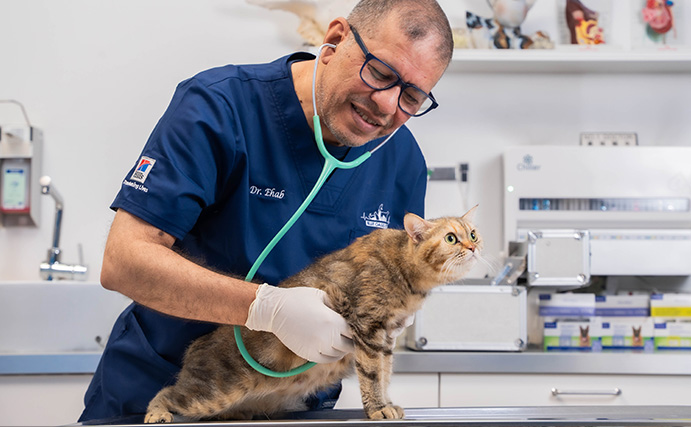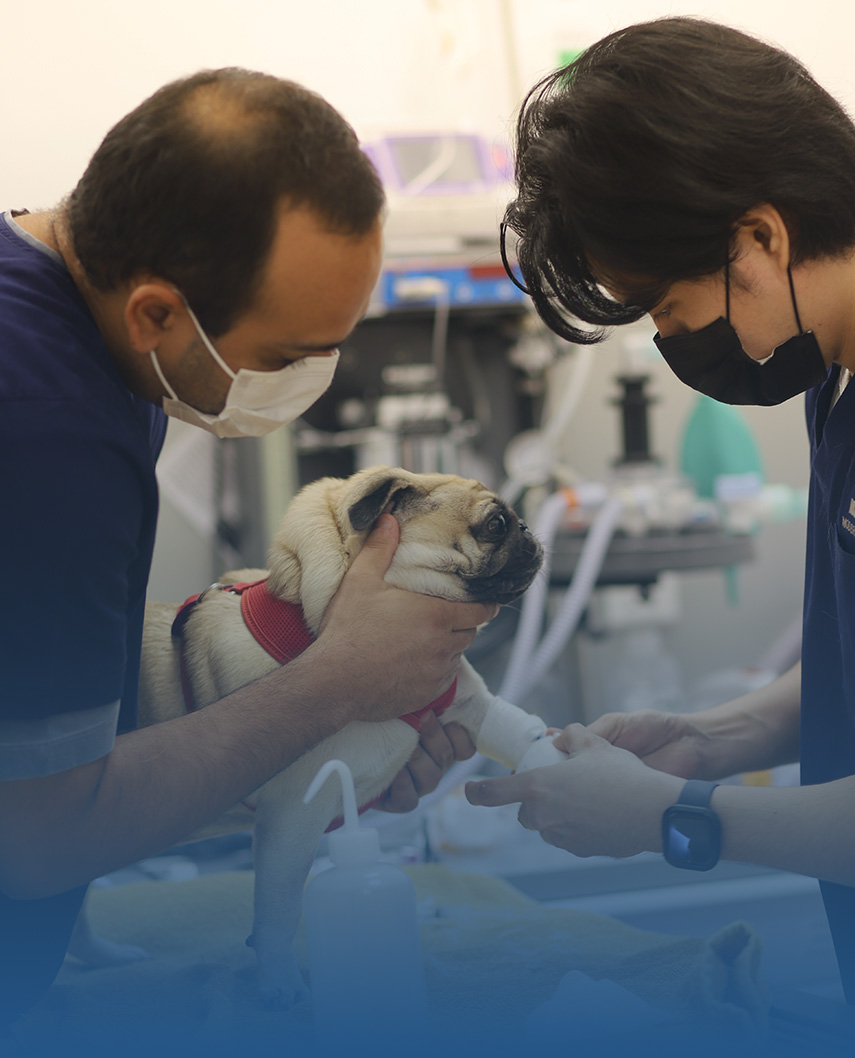Microchipping
Losing an animal is the nightmare of every pet owner. It may be the result of an open door, an unlocked gate, or being caught off guard on an outing, but pets can slip away, and once that happens, searching for them with no proof of ownership can be extremely complicated. The good news, however, is that the process can be greatly simplified with the help of an inexpensive microchip.This article describes all you need to know about microchipping your pet in the UAE, including how it works and why it is mandatory, through the benefits it provides for travel and the longer term.
We simplify the process, make it safe, and ensure it is completely compliant with local laws at Blue Oasis Veterinary Clinic, giving you peace of mind.
What is a pet microchip?
A microchip for pets is a sterile, smaller than a rice-grain-sized device. It is implanted just below the skin of your pet, usually on the side of the neck. It is biocompatible, and it is safe to remain in the body of your pet for its lifetime.
A microchip is not a tracking GPS! It doesn’t enable you to track your pet in real-time. It merely has an ID number, that can be read out with a microchip reader. Your contact details, however, are tied to the ID number in our clinic database and at the Dubai Municipality. That makes it possible, in the event your lost pet is recovered and scanned, to find you via this database information.

How Does a Pet Microchip Work?
Pet microchips use radio frequency identification (RFID) technology. The chip itself doesn’t use any power source or moving parts. It is powered by the use of a special scanner that sends out a low radio frequency. When the scanner is moved over your pet, the chip sends its unique ID number back to the reader.
Here is how the process usually goes if the lost pet is recovered:
- A staff member at an animal shelter, veterinary clinic, or municipality uses a handheld scanner to scan for a microchip.
- When there is a chip, the scanner shows the ID number for the pet.
- It is recorded in a microchip registry database.
- The registry connects the ID number with the owner’s details, through which it is then possible to contact the owner and arrange for them to be reunited.
If you microchip your pet, but the number is not registered, the chip won’t assist in finding you.
Legal requirements in the UAE
Microchipping pets is not only recommended in the United Arab Emirates—it is compulsory. All cats and dogs living in the UAE need to be vaccinated against Rabies, microchipped and registered with the local municipality. This law was introduced to
- Ensure responsible pet ownership
- Management of the stray animal population
- Monitor vaccination and state of health
- Help in the recovery of lost/stolen pets
Prevent Illegal Breeding and Sales
The registration entails:
- microchip number
- owner’s complete contact details
- Proof of vaccination (particularly for rabies)
- Pet breed, age, and description
Microchipping is a process that is done once, but if you relocate, change your phone number, or change ownership of the pet, you need to update your information in our clinics and the Municipality database.

Travel and Relocation: First Comes Microchipping
Microchipping is not optional if you intend to travel abroad with your pet, as it is an integral part of most countries’ import procedures.
Here is why microchipping should be done before vaccinations, especially for the rabies vaccination:
- The microchip is an official, permanent identifier that connects your pet to their vaccination history.
- Whenever crossing borders, the immigration authorities will authenticate the pet for whom the vaccines were given against the information listed in the papers.
- The microchip, however, would not be accepted if it was implanted after the first vaccination.
When should a pet be microchipped?
Microchipping is possible as early as 8 weeks old, with the timing varying slightly according to the size and state of health of the animal. The earlier you do it, the quicker your pet will be protected. We recommend the implantation of the microchip along with the first Rabies vaccination. Nevertheless, it can be performed in the course of any visit to the vets. It doesn’t matter if your pet is older and wasn’t microchipped for whatever reason, it can be microchipped at any age.
Does Microchipping Hurt My Pet?
It is quick and almost painless — much like getting an injection. It is done with a special syringe and usually only lasts a seconds It doesn’t require an anaesthetic.
Some pets might experience a slight pinch or some soreness in the area where the injection is administered for a few hours. The chip will not wander throughout the body and won’t harm your pet. It stays in place after it is implanted and works quietly for life.
What if my pet goes missing?
Should your pet go missing or be stolen, your microchip is your best hope for being reunited. Collars and ID tags can be lost, stolen, or removed, whereas the microchip cannot. When somebody finds your animal and brings them into a clinic or shelter:
- They’re scanned for the microchip.
- The ID number is accessed and verified in pet registries at vet clinics and the Municipality.
- Provided that your information is recent, you will be reached promptly.
Microchips increase the likelihood of being recovered. Research indicates that microchipped dogs are more than twice as likely to be returned home than non-microchipped dogs, and cats are 20 times as likely to be returned home if microchipped.
Keeping Your Information Up to Date
Your pet’s microchip will only work if your details are up to date. If you relocate to another country or change your phone number or email address, you will need to update your registration with:
- new phone number and address
- email address
Secure Your Pet’s Future Today
Protect your pet for life with an easy microchip. Blue Oasis Veterinary Clinic provides speedy, microchipping and Municipality registration.

Frequently Asked Questions
No, microchipping is low-pain and quick. It is the same as getting an injection. It is implanted using a sterile needle and generates very little pain. Most pets aren’t even aware it was performed and just go on about their day with no changes in behaviour, no sign of pain.
Microchips are not active and don’t have batteries. They need no replacement, no batteries, and no maintenance. They will function throughout your pet’s lifetime after being implanted. Their signal comes into play only when the special reader is used.
No, the microchip does not include any kind of GPS. It will not inform you where your pet is. It can only be accessed when it is scanned using an appropriate scanner. You would need an independent GPS collar or device for live tracking.
You need to register with the new country’s pet microchip registry. ISO microchips work universally. It is also advisable that you seek the advice of your veterinarian for travel documentation requirements and compliance.
You should update your details in the pet microchip database as soon as possible. It includes your phone number, home address, and email. The microchip won’t assist in bringing your pet back to you if your details are wrong in the database.



